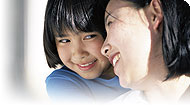Health Notes
Birth Defects Prevention

Lifestyle Modification
Pregnant women should avoid alcohol completely. Alcohol intake by pregnant women can lead to a spectrum of disorders, including foetal alcohol syndrome (FAS), alcohol-related neurodevelopmental disorder (ARND), and alcohol-related birth defects (ARBD). FAS is characterised by growth retardation, abnormal facial features, and mental retardation. In addition, about 80% of children with FAS have an abnormally small cranium, called microcephaly. Children with FAS also have serious lifelong disabilities, including learning disabilities and behavioural problems.1, 2, 3 ARND and ARBD are milder versions of FAS.4
Drinking just one alcoholic drink per day while pregnant has been associated with increased risk of having a child with impaired growth. The potential for harm increases as larger amounts of alcohol are consumed. Even minimal alcohol consumption during pregnancy can increase the risk of hyperactivity, attention deficiency, and emotional problems in the child.5 No safe level of alcohol intake during pregnancy has been determined.6, 7
There are many medications that a woman should not use during pregnancy. A doctor should review all over-the-counter and prescription medications, as well as any nutritional or herbal supplements. For example, the commonly prescribed acne medication, isotretinoin (Accutane®), a synthetic form of vitamin A, can cause severe birth defects if used during pregnancy.
Excessive noise may have damaging effects on a developing foetus. Many pregnant women are exposed to noise in the workplace.8, 9 In one study, the children of women exposed consistently to high levels of occupational noise during pregnancy were more likely to have high-frequency hearing loss (identified at four to ten years of age) than were children whose mothers were not exposed to such noise.10 Noise exposure at these excessive levels (i.e., 85 to 90 decibels) occurs in many occupations, even among women wearing protective hearing devices. Other environmental sources of excessive noise include rock concerts, boom boxes, car stereos, and airport jet traffic.
Women who are obese prior to pregnancy are at increased risk of having an NTD-affected pregnancy. One study showed a twofold or greater risk of NTD-affected pregnancy among women who were obese.11
Copyright © 2024 TraceGains, Inc. All rights reserved.
Learn more about TraceGains, the company.
The information presented by TraceGains is for informational purposes only. It is based on scientific studies (human, animal, or in vitro), clinical experience, or traditional usage as cited in each article. The results reported may not necessarily occur in all individuals. Self-treatment is not recommended for life-threatening conditions that require medical treatment under a doctor's care. For many of the conditions discussed, treatment with prescription or over the counter medication is also available. Consult your doctor, practitioner, and/or pharmacist for any health problem and before using any supplements or before making any changes in prescribed medications. Information expires December 2024.

